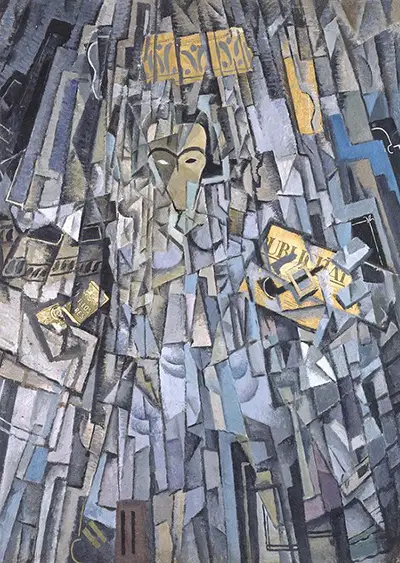It is interesting that, given the way in which surrealism defined his work as an artist, Dali decided to paint this portrait in a cubist manner. Instead of the fluid forms of his surrealist paintings (such as finely imagined egg whites and warped clocks) we see the straight lines that were so typical of cubism.
This is also not a conventional portrait - it is difficult to make out a human form in the picture initially. Rather than showing us realistically what the artist would look like, the portrait perhaps mystifies us further.
However, it can also be argued that this cubist portrayal of himself actually shows us something authentic about Dali's personality - his desire to flout conventions and keep viewers guessing.
Cubism was very popular in the time in which Dali painted this picture (he completed it in 1923). Cubism involved breaking an image up into interlocking or overlapping cubes to create an effect that was at once geometric and dreamlike.
Cubism is also often associated with an industrial mindset and the industrial greys and steely blues in 'Cubist Self Portrait' are evidence of this mindset. What the cubist background of this painting is supposed to represent - a kind of toreador's cape, an engulfing wave, or something different - is perhaps up to the viewer to decide.
Dali's most famous feature is often said to be his trademark curly moustache. It was said that a letter bearing a picture of his moustache instead of an address would nevertheless get to him.
It can be suggested that Dali suggests the distinctive curves of his moustache in this painting, and asks the viewer to try and find them, searching diligently with their eyes below the oval face like shape in the centre of the portrait.

